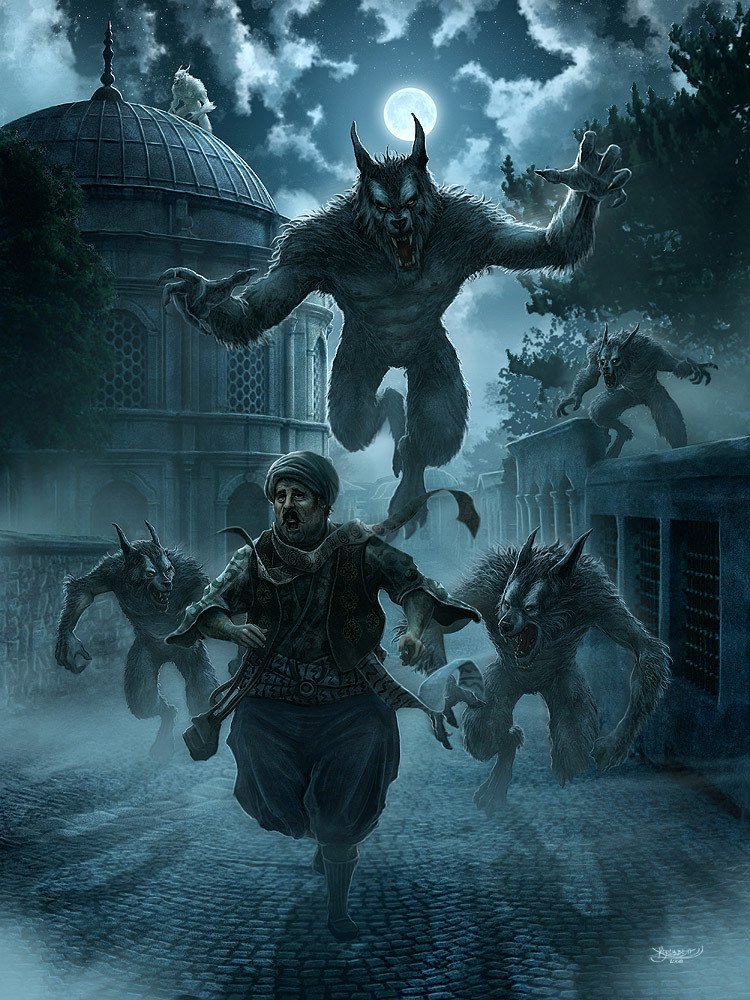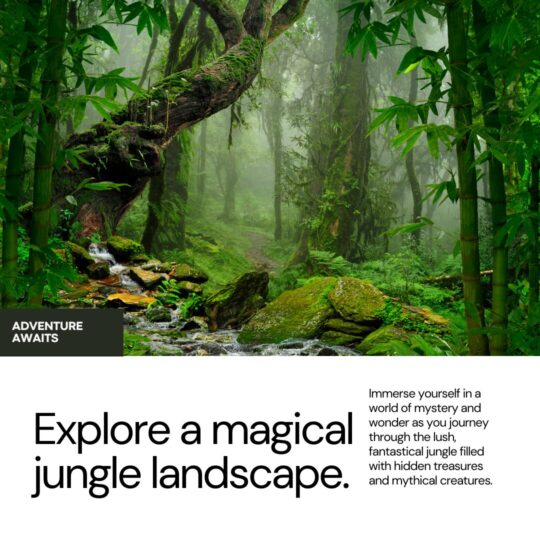
D&D Ideas — Sight
Welcome once again to the weekly newsletter. This week’s topic is sight, which we discussed in our weekly live chat. We hangout every Monday evening at 8 p.m. EST at Nerdarchy the YouTube channel talk about D&D, RPGs, gaming, life and whatever nerdy stuff comes up. Speaking of the sight point your peepers over to the Mage Forge where you’ll see quite a few of the 250 magic items provide unusual ways to affect an adventurers’ vision. You can get Nerdarchy the Newsletter delivered to your inbox each week, along with updates and info on how to game with Nerdarchy plus snag a FREE GIFT by signing up here.
Nerdy News
Unearth some card magic from the week that was! Master new arcana related to the upcoming Book of Many Things, make the most of feats for your Eldritch Knight and learn what it takes to be a hardcore Zookeeper. Plus our weekly hangout, a chat with an industry pro and the latest exploits of Nerdarchist Ted’s all wizard Untraditionally Arcane campaign round out this week’s Nerdy News. Check it out here.
Delving Dave’s Dungeon
Sight based monsters and themes are a lot more prevalent than I initially believed. A quick D&D Beyond search of monsters brings up five monsters. I’m sure there are other monsters as well. Searching by special attack isn’t great but better than going off of my memory.
The yeti’s Chilling Gaze deals cold damage and can paralyze the victims. The medusa is a classic with their Petrifying Gaze turning their victims to stone. We also have the basilisk, which like the medusa boasts a Petrifying Gaze. Things get changed up a little with the nothic, whose Rotting Gaze deals necrotic damage. Lastly there is the bodak, which actually has two gaze attacks. The bodak’s Death Gaze can kill any creature within 30 feet who meets their gaze while their Withering Gaze deals necrotic damage to whoever they look upon.
These five monsters encompass challenge rating 2 (nothic) to 9 (abominable yeti) covering the aberration, monstrosity and undead monster types. I’ve been sleeping on the bodak, but no more. I think my Under the Dome players are in for a rude awakening.
The other place I found inspiration for concepts related to sight for D&D is through TV and film. In the Netflix film Bird Box essentially if you go outside without a blindfold you end up a suicide victim. The idea of one of your own senses being weaponized against you could be used in your own RPG. Would I do it for a protracted arc in one of my games? No, but for a session you could turn things on their head.
Dr. Who is another great example with two of the threats faced by The Doctor — The Silence and Weeping Angels — weaponized your sight against you. The Silence’s power means when you aren’t looking at them you forget they exist. Making it even worse, The Silence are able to embed suggestions that are remembered.
Weeping Angels are statues of angels that can’t move while you are looking at them. They are also incredibly fast — so fast if you blink they’ll be on you.
Using these things for inspiration we can have some fun in our D&D games. So many D&D races get darkvision. I feel like this is a perfect place to have some fun. Think about a dungeon or adventure area that negates darkvision along the lines of our own Gaze of the Void Eye module. The Gloom Stalker ranger gives us some precedent for this with their Umbral Sight feature.
To further twist the knife perhaps the predominant enemy in this area isn’t affected by the anti-darkvision field. It could make other senses more unique for this adventure like tremor sense, blindsight and Devil’s Sight. Is this adventure taking place in a part of the Underdark? Will the party be equipped with enough magic, torches or lanterns to overcome this obstacle?
From Ted’s Head
Many times whenever D&D characters walk into a room, around a corner or into any new surroundings they’ll ask, “What do I see?” I do not even want to attempt a guess at the number of times I personally have asked this question at the gaming table. We are creatures who rely on sight. Other animals in the real world use hearing and smell more than sight. It is even reflected in the game stats that they have advantage on checks that rely on hearing or smell.
With us being so dependent on sight it can be fun to see what happens when you take it away. A number of years ago I ran a session taking place in complete darkness. While there are a couple of builds allowing characters to see in magical darkness most D&D characters won’t have this benefit. You might be amazed how many spells specify targets or spaces you can see. Couple this with all attacks being made with disadvantage and combat becomes a lot more challenging. Not only this but what if the party had to solve a puzzle with only their sense of touch to guide them?
Going with that, let’s look at a simple kids toy for inspiration. Many toddlers had toys that were shapes that they had to put into a hole, but they only fit if it is the right shape and right hole. Now add in some religious icons and take away sight and you have a much harder situation. You want to add an extra layer? Why not have a fight taking place with the puzzle solution required to turn the light on and the creatures can keep coming until the light is on to banish the darkness and the creatures.
Running this kind of encounter could be a lot of fun. Depending on the level of the party I would use shadows but remove the Strength reduction part of their Strength Drain action. Maybe call them animated darkness. Since there would be an unlimited amount of them until the light was turned on they present just enough threat. Their attacks could have advantage while the adventurers would be made with disadvantage. I would also stipulate any magic capable of generating light does do so within this special darkness.
From the Nerditor’s Desk
The plan to follow up last week’s sound themed encounter with one based on sight proceeded smoothly right up until the time to send this newsletter out drew nigh and the platform crashed, which included the encounter featuring a roc (one of the only 5E D&D creatures with Keen Sight) and a spelljamming helm. I plan to salvage the concept to share in its own post later in the week so keep your eyes peeled for it.
During the live chat Nerdarchist Dave paid me a wonderful compliment about my flair for visual description as a Dungeon Master. I take great pride in this especially because it’s something important to me and a good deal of my prep for games involves the fantastic sights characters may see. I’ll share some insights and observations about the impact sights can have on players and by extension their characters. How impactful?
Combat
My favorite examples of how visual description helps in combat all relate to selling the sizzle. Players often know or at least have a decent idea what any particular monster can do. Even if they’re unfamiliar with a creature a player might also assume it’s in the ballpark of being an appropriate challenge. But if a DM comes in with some vivid descriptive flair it can do a ton of heavy lifting to get engage players.
I like to use giants to illustrate this point. They’re big, they’ve got a lot of hit points and they can lay the smack down but it’s not uncommon for D&D players to feel dismissive of them because those are merely mechanical aspects and very simple ones at that. But this all leaves out giants’ primary trait — they’re big!
Sure, there’s lots of monsters of similar or greater size category but what makes giants scary is their similarity to humans, or in this case D&D adventurers. They function pretty much the same except scaled way up. Think of all the ways you can affect your surroundings. Now imagine you’re orders of magnitude bigger. When you describe how an iron greatsword the size of a Buick slams several feet into the ground right next to the adventurer who nimbly avoided the attack and showers them with dirt, rocks and debris when it yanks the blade back, it helps.
Players who visualize the scenario and their character’s place within the peril tend to become more immersed. The combat becomes less an application of mathematical superiority and more a question of survival fraught with tension. At least it is for me as a player and in my experience as a DM too.
Think about combat like a frenetic action scene from a movie. What does the character see on their turn? It’s one thing to look down at a map and see eight goblins scattered about anywhere between 10-30 feet away. It’s quite another to quickly glance across the dungeon chamber and see two, three, four…no, wait…eight pairs of beady eyes flashing in the flickering torchlight from behind pillars, rubble and dungeon debris, a glint of light on a wicked blood-stained blade, a goblin nocking an arrow to aim at their squishy companion.
What are you going to do, fighter?
Exploration
The best pillar! No small number of D&D players yearn for more exploration but if I’ve said it once I’ve said it a thousand times. If you’re not fighting and you’re not talking then there’s only one thing left. Exploration takes place constantly in D&D and in fact at this point my prep work for this and many other games relies on how often this takes place.
Describing the sights characters see is an invitation for the DM to dangle the most fantastic carrots ever imagined before the players. From the most desolate to the most densely packed surroundings, whatever a DM relays a character sees is the players’ ticket to ride. The example springing to mind for me took place during my Adventurers of Adventure campaign, basically a points of light style game. The party explored around the known region and far off across a gently swaying sea of tall grass they saw an enormous tree.
I always make a Pinterest board for each RPG campaign I’m involved with and for this game I curated a bunch of fantasy landscape illustrations to give me some ideas what was out there in the unknown wilds. When they went exploring I pulled up the board and this image jumped out at me in the moment so I described how terrifically big it seemed and the view from the ridgeline where they stood at midday. The moment had a peaceful quality to it especially after the difficult travel they’d experienced up to this point and the players — who normally gravitate towards either action or intrigue with NPCs — went all in for exploration.
As they neared this tree they realized it was not just enormous. It was titanic. This tree put redwoods to shame. A hundred stories tall if it was a foot. The players were completely mesmerized. They spent the rest of the day looking all around the base of the tree, certain there was something to find, but came up with nothing. Instead they awoke early the next morning and decided they’d have an impromptu tree climbing contest. Keep in mind I made the size of this tree very clear. At this point I flat out told them this could be very dangerous if they fall. They were only 2nd level so falling even 20 feet or more could be deadly and they’re about to try climbing several hundred feet!
Long story short they all lived and reached the lowest branch, which I think was something like 120 feet up. They’d spent most of their resources including Inspiration, spells and at least one Battle Master maneuver in an interesting way. The players were stoked. They asked if they could see the ridgeline where they’d first spotted the tree. One character had a spyglass and they took turns taking in a panoramic view of the countryside.
No fighting, no NPCs and yet these players spent everything they had to climb a tree for an amazing view. We still talk about the tree climbing contest to this day. A water genasi Nature cleric named Gale won the competition in case you wondered.
(There actually was something to find. Two things, both entrances to the interior, which had been hollowed out and made into an outpost of sorts. Generational factions of bird people passed stewardship of the outpost between them, sometimes begrudgingly, sometimes forcefully but usually through observation of traditions. At the time it was held by a faction of wereravens related to one of the characters’ backstories. I came up with all of this while the players were doing all of their exploring. Protip: When characters are exploring this is a great opportunity for a DM to step back a little to let the players steer the ship. Somewhere between where they take the story and ideas you come up with while the spotlight isn’t on you make for some amazing D&D memories.)
Interaction
Believe it or not this is a pillar where as a DM I lean more on the players when it comes to sight. This is also the most challenging pillar of D&D for me so while the majority of my prep time involves NPCs it’s more about their personality and motivation than how they look. Thankfully players typically seem to form the strongest images of NPCs and this usually takes care of itself.
One of the reasons I don’t invest too much time in visual details for NPCs is there’s no telling the ones for whom players take any interest. I find it fun to follow up with players after the fact and ask what they imagine an NPC looks like. Other times if it comes up I’ll use characters from other campaigns for description if those same players aren’t in the game.
More broadly when it comes to sight and the relationship to interactions there’s a lot to be said for simply making a world feel inhabited. Even a small frontier village probably has at least a dozen residents and this is being modest. For my own setting’s starting town I wound up with about 30 NPCs simply by covering the basics and imagining several families living there. With so many NPCs just about anywhere adventurers take a stroll they’re likely to spot someone.
Because whatever a DM says carries weight, by merely describing the sight of everyday life players often feel compelled to interact with NPCs. This is the reason why I invest so much time in preparing them. I like painting a picture in players’ minds and this includes people doing what people do. But players always think all these rando people must be important so they always want to interact! It’s a vicious cycle.
At the end of the day though all NPCs can become information delivery services much better than a DM lore dump. Keep this in mind when you describe the sights seen by adventurers in your D&D games. Painting the broad strokes and then creating the details in collaboration with the rest of the players can create quite the sight to see.
*Featured image — Yeti, medusa, basilisk, nothic and bodak are all D&D monsters with dangerous sight based powers. The gaze of any one of these creatures carries serious consequences for the unfortunate adventurer who meets their eye(s). [Composite images courtesy Wizards of the Coast]









No Comments